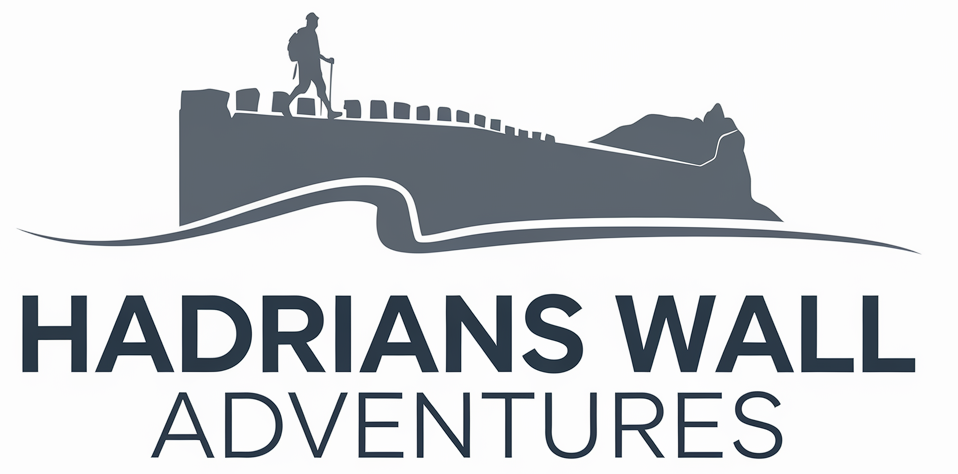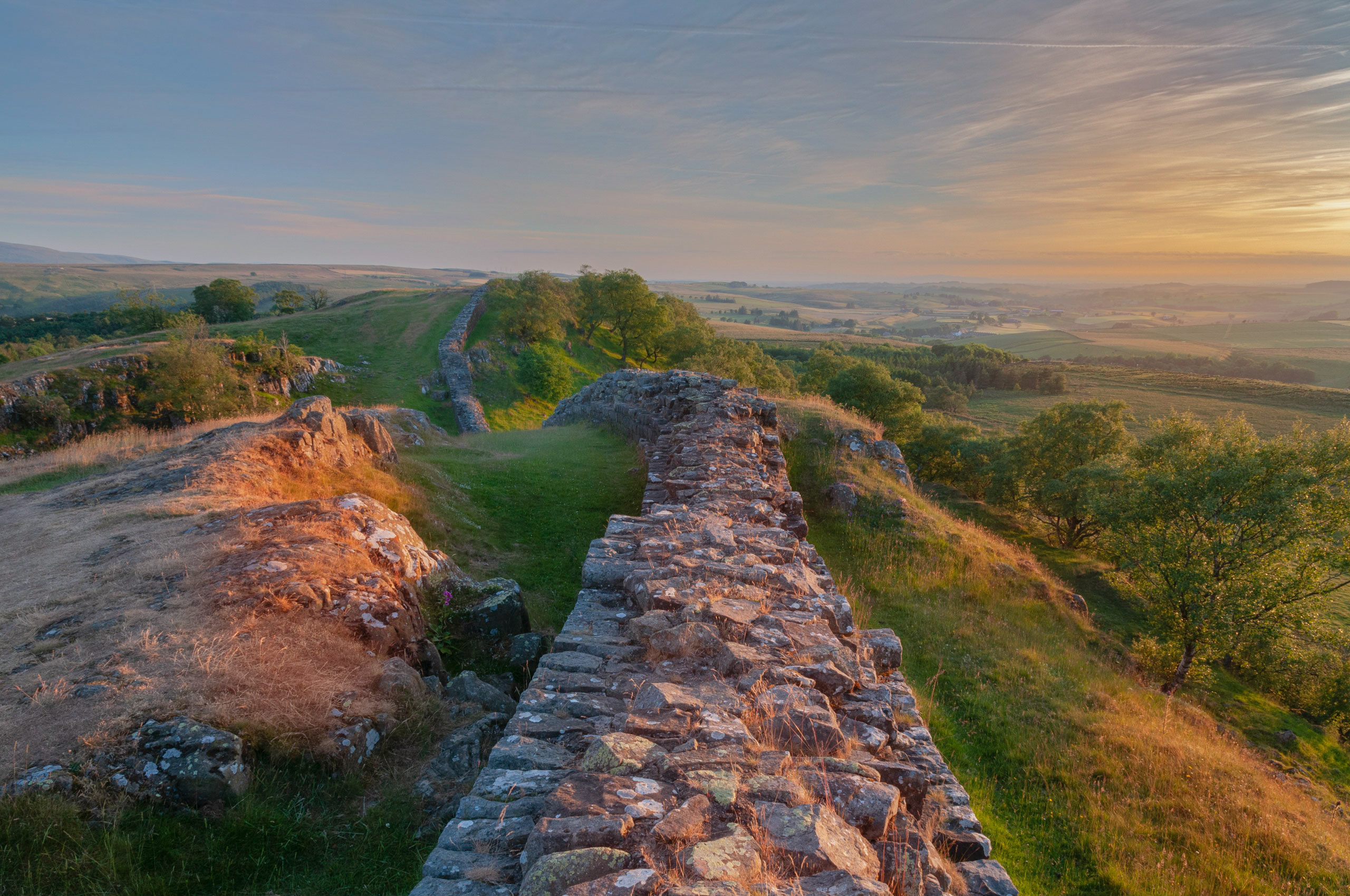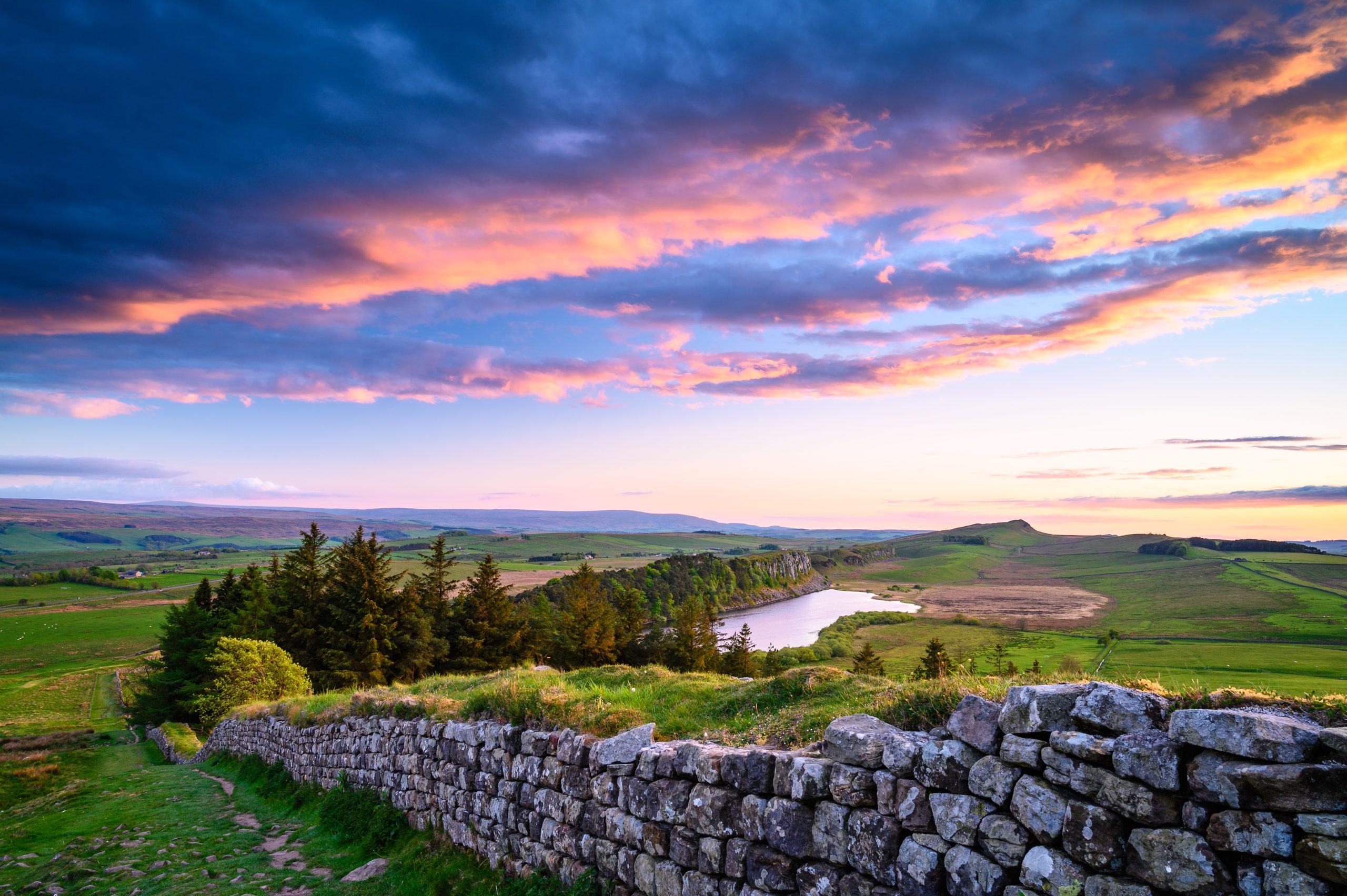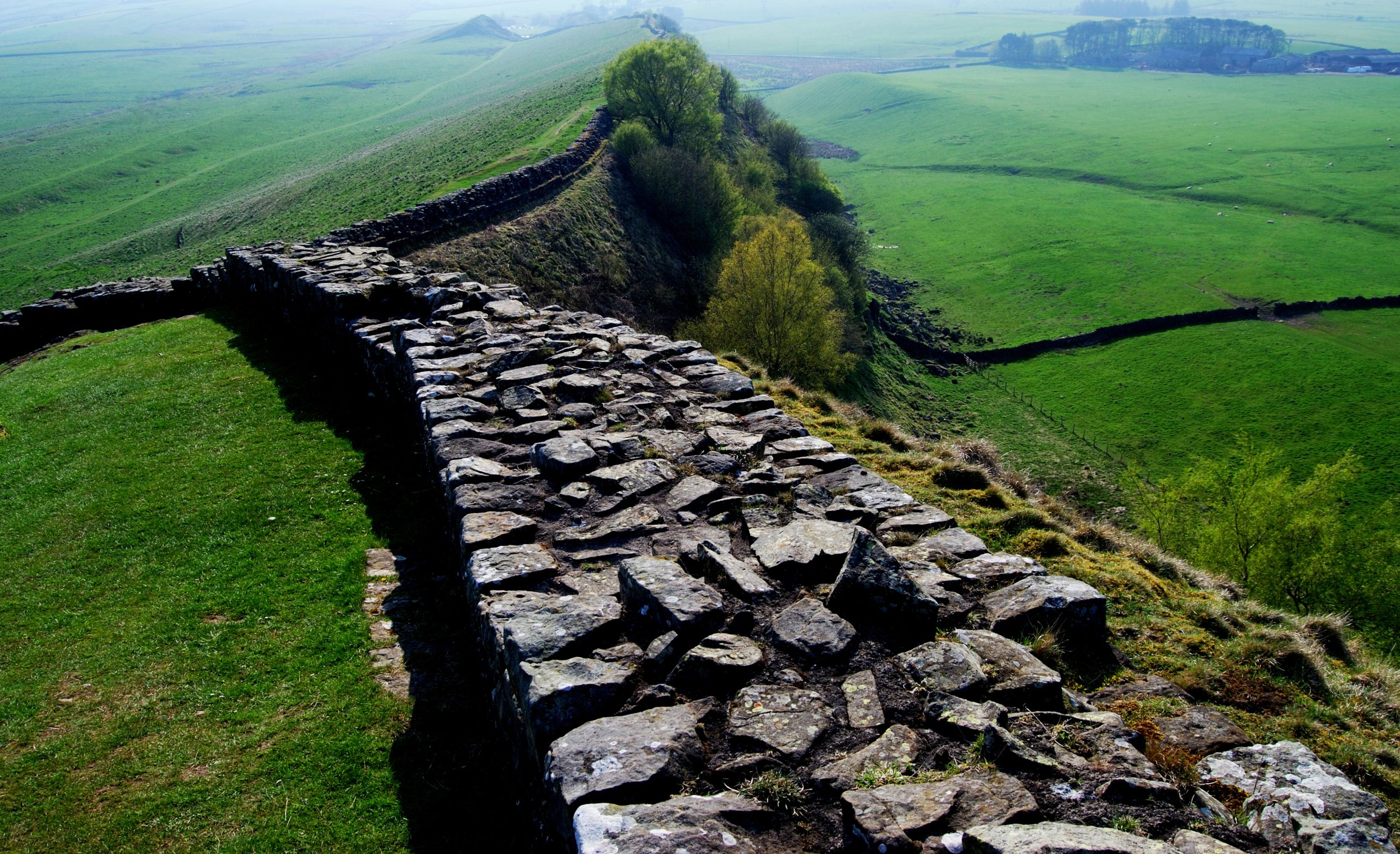Key Points / Quick Summary
- West to east offers the best scenic crescendo, ending at the dramatic coastal fortress of Segedunum in Wallsend
- East to west walkers benefit from the sun behind them during afternoon walking, reducing glare and improving photography
- Weather patterns favour eastbound walkers, with prevailing westerly winds at your back rather than in your face
- Logistics are simpler heading west to east, with better transport connections from Newcastle upon Tyne at the start
- The central section around Steel Rigg is spectacular in either direction, though context matters for maximum impact
- Most self-guided walking holiday providers accommodate both directions with flexible baggage transfer services
The Great Hadrian’s Wall Direction Dilemma
Choosing which direction to walk Hadrian’s Wall ranks among the most debated topics in British long-distance walking. Unlike many National Trails where one direction clearly dominates, the Hadrian’s Wall Path presents a genuine choice that significantly affects your walking experience.
The 84-mile route connecting Wallsend in the east with Bowness-on-Solway in the west traverses some of England’s most dramatic and historically significant landscapes. Both directions offer their own advantages, and understanding these differences helps walkers make an informed decision that matches their priorities.
This comprehensive guide examines every factor that influences the direction debate, from practical logistics to experiential elements that shape your walking holiday.
Starting from Newcastle: The Case for West to East
Superior Transport Links
Beginning your self-guided walk from Newcastle upon Tyne provides unmatched convenience. The city offers excellent rail connections from London, Edinburgh, Manchester and other major centres. Newcastle International Airport serves numerous European destinations, making it ideal for overseas walkers.
Wallsend, where the Roman Wall began at Segedunum fort, sits just a short Metro journey from Newcastle city centre. This eliminates the need for complex onward travel before starting your walk.
By contrast, Bowness-on-Solway on the Cumbrian coast requires a bus journey from Carlisle, adding logistical complexity and time constraints to your first or last day.
The Sun Position Advantage
Walking west to east positions the afternoon sun behind you during the latter half of each day’s walk. This practical benefit reduces eye strain and glare, particularly important when navigating uneven terrain or consulting maps and GPS devices.
Photographers especially appreciate this orientation. The golden hour light illuminates landscapes ahead rather than creating backlit silhouettes. The dramatic crags and undulating countryside of the central section photograph beautifully with front or side lighting.
During summer months when many walkers tackle the route, eastbound walkers avoid squinting into low evening sun during the final hours of walking.
Weather Patterns Work in Your Favour
Britain’s prevailing weather systems travel from west to east, driven by Atlantic weather fronts. Walking in this direction means the wind generally pushes from behind rather than buffeting you head-on.
This advantage becomes particularly noticeable on exposed sections. The famous ridge walk between Steel Rigg and Housesteads, perched atop the Whin Sill escarpment, can be punishing with a westerly headwind. Walking eastbound transforms this section into an exhilarating experience rather than an exhausting battle.
Rain showers also travel eastward. Whilst this doesn’t prevent you getting wet, it does mean you’re more likely to walk out of poor weather rather than into it.
The Scenic Crescendo: Building Towards Spectacular Views
How Landscapes Unfold West to East
Walking from Bowness-on-Solway begins gently through marshland and flat coastal terrain. The Wall itself is largely absent here, buried beneath centuries of agricultural land or robbed out for building stone.
The route gradually builds in drama and archaeological interest. Walkers encounter increasingly impressive Roman remains through Cumbria before reaching the spectacular central section in Northumberland. Here, the Wall rides the dramatic volcanic Whin Sill ridge, offering the most photographed views along the entire route.
This progression creates a natural crescendo. Each day typically offers more impressive scenery and better-preserved Roman remains than the last. The psychological boost of anticipation and increasing reward suits many walkers’ preferences.
The Once Broughton to Steel Rigg Section
This central stretch represents the dramatic peak of the walk. The Wall climbs and descends sharp crags, with sweeping views across Northumberland National Park. Roman forts at Birdoswald, Housesteads and Vindolanda showcase exceptional archaeology.
Approaching these highlights from the west means you’re encountering them mid-journey, when fitness has developed but enthusiasm remains high. The dramatic landscapes feel like the reward for previous days’ efforts.
Ending at Segedunum
The walk concludes at Segedunum Roman Fort in Wallsend, where an excellent museum and reconstructed bathhouse provide a fitting finale. The fort marks the genuine eastern terminus of Hadrian’s Wall, offering historical closure to the journey.
Newcastle’s proximity means celebratory meals and comfortable accommodation are immediately accessible. The psychological satisfaction of reaching a major city adds to the sense of completion.
Starting from Bowness: The Case for East to West
The Gentle Introduction
Beginning at Bowness-on-Solway offers a gentler physical start. The flat coastal marshland allows walkers to build fitness gradually before tackling the challenging central section.
Those concerned about knee problems on descents may prefer walking east to west. The Whin Sill section involves more climbing but less steep descent when approached from the east.
Saving the Best for the Middle
Walking east to west positions the most spectacular scenery and Roman remains in the middle section. This places the highlights when walkers are fittest and most energised.
Some walkers appreciate experiencing the dramatic peaks mid-journey rather than as a finale. The subsequent gentler eastern section allows for reflection and recovery whilst still enjoying varied countryside.
Historical Authenticity
The Romans built Hadrian’s Wall from east to west, beginning at the Tyne and extending towards the Solway. Walking in this direction follows the construction sequence, adding a subtle historical dimension.
This appeals particularly to Roman history enthusiasts who appreciate following the builders’ original journey.
Practical Logistics for Self-Guided Walkers
Baggage Transfer Services
Reputable self-guided walking holiday providers offer baggage transfer in both directions. Your luggage moves ahead to each night’s accommodation whilst you walk unencumbered with just a daypack.
This service operates equally smoothly in either direction. The key factor is choosing an established provider with reliable local partners.
Accommodation Availability
Both directions offer similar accommodation options. The route features a good spread of villages, towns, pubs and B&Bs.
Newcastle offers more accommodation choice than Carlisle, slightly favouring west-to-east walkers for pre- and post-walk stays.
Daily Distances and Stage Planning
Standard itineraries divide the route into seven or eight days, averaging 10-12 miles daily. Both directions follow identical terrain, though the experience of climbing versus descending specific sections differs.
East-to-west walkers descend more on the Whin Sill section, whilst west-to-east walkers climb more. Neither option is definitively easier; the choice depends on whether you prefer uphill or downhill challenges.
Weather Considerations Throughout the Year
Seasonal Wind Patterns
Spring and autumn bring variable weather with Atlantic depressions moving eastward. Walking west to east during these seasons maximises the benefit of tailwinds.
Summer typically offers lighter winds, reducing the directional advantage. However, prevailing patterns still favour eastbound walkers more often than not.
Sun Exposure and Heat Management
During hot summer weather, afternoon sun from behind reduces direct facial exposure. This matters more on exposed sections like the Whin Sill ridge where shade is minimal.
Walking east to west on hot days means facing afternoon sun, potentially causing more fatigue and requiring diligent sun protection.
The Verdict: Which Direction Suits You?
Choose West to East If You:
- Prioritise dramatic scenery building to a crescendo
- Want prevailing winds and weather at your back
- Prefer afternoon sun behind you for better photography
- Value simpler transport logistics from Newcastle
- Appreciate ending at a major city with excellent facilities
- Like the psychological boost of improving landscapes
Choose East to West If You:
- Want to follow the Romans’ original construction direction
- Prefer tackling the most challenging terrain mid-journey
- Need a gentle start to build fitness gradually
- Enjoy experiencing highlights when you’re strongest
- Prefer descending rather than climbing steep sections
- Want a quieter finish away from urban areas
That said, the route is magnificent in either direction. Personal preferences, group dynamics and practical constraints may make east to west the better option for individual circumstances.
Neither choice is wrong. The most important decision is simply to walk this extraordinary route, whichever direction calls to you.
FAQs
Can I walk Hadrian’s Wall in either direction?
Yes, Hadrian’s Wall Path is equally accessible in both directions. We accommodate both options with baggage transfer, accommodation booking and route notes. The official National Trail designation doesn’t specify a preferred direction, giving walkers complete freedom to choose based on personal preference.
Which direction do most people walk Hadrian’s Wall?
Statistics suggest a fairly even split, though west to east has grown slightly more popular in recent years. Approximately 55% of walkers now choose westbound, influenced by improved logistics from Newcastle and the scenic crescendo factor. Both directions remain common enough that you’ll encounter walkers heading in either direction along the route.
Does the direction affect how difficult Hadrian’s Wall is to walk?
The overall difficulty remains similar in both directions, as you cover identical terrain and distances. The main difference lies in whether you’re predominantly climbing or descending the dramatic Whin Sill section. East-to-west involves more descending on steep sections, which can be harder on knees, whilst west-to-east involves more sustained climbing, which demands cardiovascular fitness.
What’s the prevailing wind direction on Hadrian’s Wall?
Britain’s prevailing winds blow from the southwest to west, driven by Atlantic weather systems. This means walking west to east typically provides a tailwind, particularly beneficial on exposed ridge sections. Whilst wind direction varies daily, the statistical advantage favours eastbound walkers throughout most of the year.
Is transport easier at one end of Hadrian’s Wall?
Newcastle upon Tyne at the eastern end offers significantly better transport connections than Bowness-on-Solway in the west. Newcastle has a major railway station, international airport, and Metro links to Wallsend where the Wall begins. Bowness requires a bus journey from Carlisle, with limited services and less flexible timing, making it more challenging as a starting point.
When is the best time to walk Hadrian’s Wall?
May through September offers the most reliable weather and longest daylight hours for walking Hadrian’s Wall. July and August are busiest but provide the most settled conditions. April and October offer quieter paths with acceptable weather but require flexibility for shorter days and variable conditions. Direction choice becomes more weather-dependent outside peak summer months.





